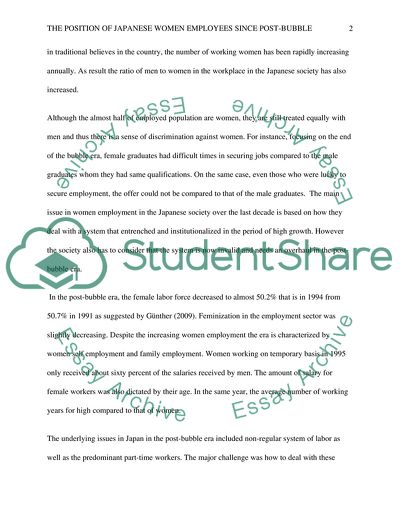Cite this document
(The Position of Japanese Women Employees from Post-Bubble to Now Report - 1, n.d.)
The Position of Japanese Women Employees from Post-Bubble to Now Report - 1. https://studentshare.org/gender-sexual-studies/1749657-the-position-of-japanese-women-employees-from-post-bubble-to-now
The Position of Japanese Women Employees from Post-Bubble to Now Report - 1. https://studentshare.org/gender-sexual-studies/1749657-the-position-of-japanese-women-employees-from-post-bubble-to-now
(The Position of Japanese Women Employees from Post-Bubble to Now Report - 1)
The Position of Japanese Women Employees from Post-Bubble to Now Report - 1. https://studentshare.org/gender-sexual-studies/1749657-the-position-of-japanese-women-employees-from-post-bubble-to-now.
The Position of Japanese Women Employees from Post-Bubble to Now Report - 1. https://studentshare.org/gender-sexual-studies/1749657-the-position-of-japanese-women-employees-from-post-bubble-to-now.
“The Position of Japanese Women Employees from Post-Bubble to Now Report - 1”. https://studentshare.org/gender-sexual-studies/1749657-the-position-of-japanese-women-employees-from-post-bubble-to-now.


